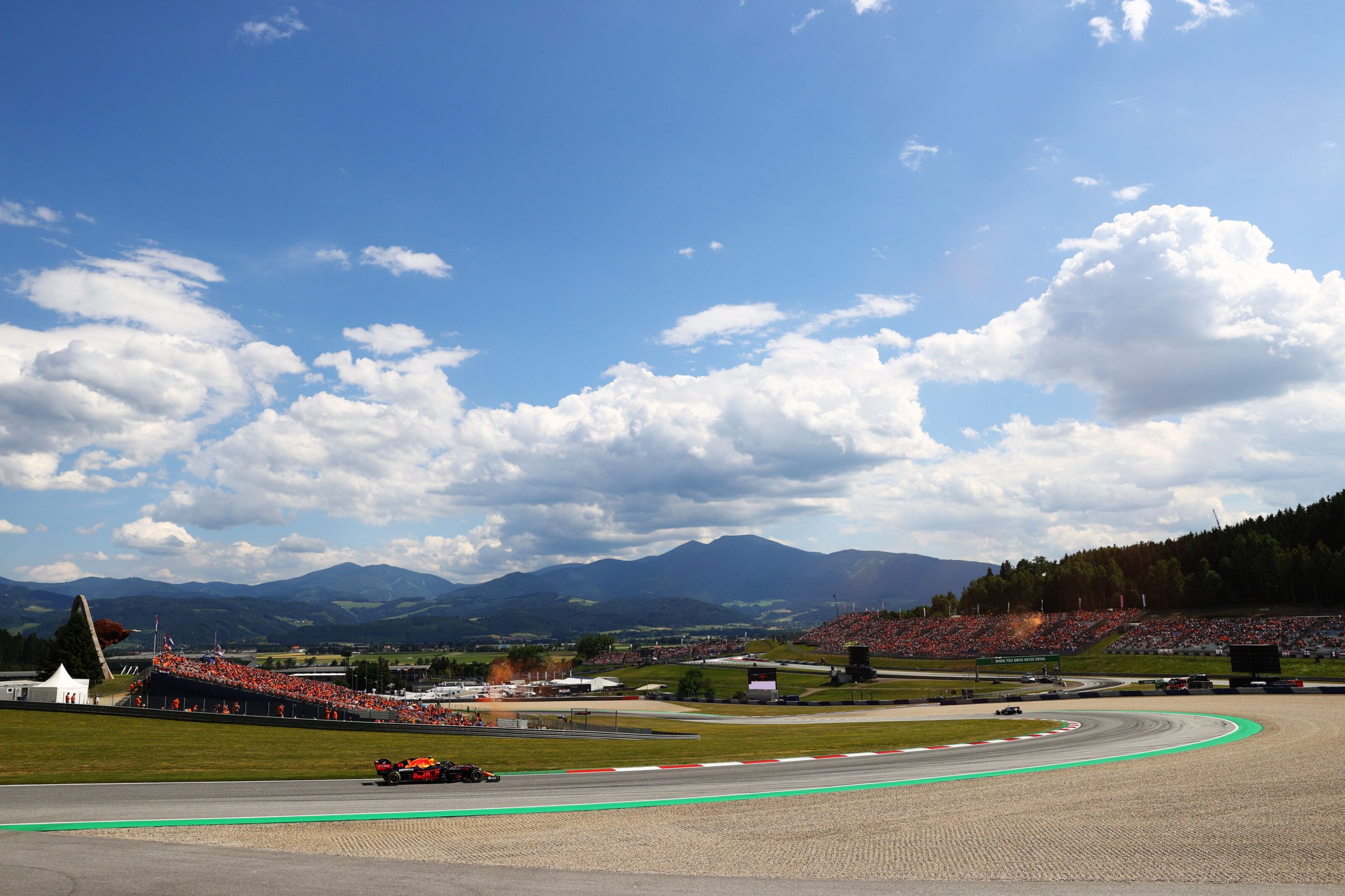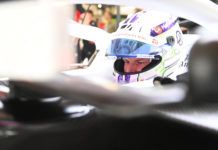The final weekend of F1’s first July double header takes place at the Red Bull Ring for the Austrian GP. Formula 1’s governing body, the FIA, has revealed the fine details and notable changes to the circuit since F1 visited last season.
The lap’s length is unchanged, at 4.318km, and so is the number of racing laps on the Sunday – standing at a high 71 because of the shorter nature of this track. The race lap record is a 1:05.619 set by Carlos Sainz for McLaren in 2020.
The pit lane speed limit remains at 80kmh throughout the weekend, which is of course a Sprint event for the first time in the circuit’s history. The race director notes that practice starts may be carried out on the track at the end of each free practice session but none maybe carried out in the pit lane.
In contrast to Silverstone’s twelve points of change, there is one change to the Austrian circuit itself noted by the FIA ahead of the weekend:
- The barrier between Turn 2 and Turn 3 has been updated to accommodate the layout used for MotoGP.
This year will be the first time Formula 1 races on the updated MotoGP Turn 2 which, although leaves the layout F1 uses unchanged, looks noticeably different than before with the newly installed chicane for the bikes in place.
In terms of the track limits, while noting white line as his usual point, the FIA Race Director Neils Wittich has noted that drivers will have to negotiate the exit of Turn 10 otherwise, the lap will be deleted and invalidated by the stewards.
- In accordance with the provisions of Article 33.3, the white lines define the track edges. During Qualifying, Sprint and the Race, each time a driver fails to negotiate with the exit of turn 10, will result in that lap time and the immediately following lap time being invalidated by the Stewards.
The FIA has also revealed the exact locations of the DRS detection and activation points for each of the relatively short circuit’s three DRS zones. The detection line for the first DRS zone is 160m before Turn 1, activating 102m after Turn 1. Detection takes place 40m before Turn 3 for the second DRS zone, with the activation point 100m after Turn 3 at the highest point of the track. The third and final DRS zone’s detection point is 120m before Turn 10 (the final corner), with DRS opening 106m after Turn 10 on the pit straight.
Pirelli has brought the softest compound tyres of the range, the C3 as the hard tyre, C4 as the medium and C5 as the soft due to the circuit. This is motivated by the desire to improve the racing show and entertainment, as last year’s second Austria race proved in a de facto trial of the softer compounds in comparison to the weekend prior’s Styrian Grand Prix held on harder tyres.
Due to the nature of a Sprint weekend, cars will only have one session outside of parc ferme rules, FP1, before heading straight into qualifying on Friday afternoon. FP2, on Saturday before the Sprint itself, is to be held in parc ferme conditions as is customary with this format. Tim Meyer, Silvia Bellot, Vitantionio Liuzzi and Walter Jobst, meanwhile, are the acting FIA stewards for the Austrian Grand Prix.
Number of Power Unit elements used this season as of the end of the British Grand Prix weekend (highlighted in bold are the figures over the allowed component allocation):
| No. | Car | Driver | ICE (Max 3) | TC (Max 3) | MGU-H (Max 3) | MGU-K (Max 3) | ES (Max 2) | CE (Max 2) | EX (Max 8) |
| 63 | Mercedes | Russell | 2 | 2 | 2 | 2 | 1 | 1 | 3 |
| 44 | Mercedes | Hamilton | 2 | 2 | 2 | 2 | 1 | 1 | 3 |
| 01 | RBR RBPT | Verstappen | 2 | 2 | 2 | 2 | 1 | 1 | 3 |
| 11 | RBR RBPT | Perez | 2 | 2 | 2 | 2 | 1 | 2 | 4 |
| 16 | Ferrari | Leclerc | 4 | 4 | 4 | 4 | 1 | 3 | 6 |
| 55 | Ferrarii | Sainz | 3 | 3 | 3 | 3 | 1 | 2 | 4 |
| 03 | McLaren Mercedes | Ricciardo | 2 | 2 | 2 | 2 | 1 | 1 | 2 |
| 04 | McLaren Mercedes | Norris | 2 | 2 | 2 | 2 | 1 | 1 | 2 |
| 14 | Alpine Renault | Alonso | 4 | 4 | 4 | 4 | 3 | 3 | 4 |
| 31 | Alpine Renault | Ocon | 3 | 3 | 3 | 3 | 2 | 2 | 3 |
| 10 | AlphaTauri RBPT | Gasly | 3 | 3 | 3 | 3 | 2 | 2 | 5 |
| 22 | AlphaTauri RBPT | Tsunoda | 4 | 4 | 4 | 4 | 3 | 3 | 5 |
| 18 | Aston Martin Mercedes | Stroll | 2 | 2 | 2 | 2 | 2 | 2 | 2 |
| 05 | Aston Martin Mercedes | Vettel | 2 | 2 | 2 | 3 | 2 | 2 | 2 |
| 23 | Williams Mercedes | Albon | 2 | 2 | 2 | 2 | 2 | 2 | 2 |
| 06 | Williams Mercedes | Latifi | 2 | 2 | 2 | 2 | 2 | 2 | 2 |
| 77 | Alfa Romeo Ferrar | Bottas | 3 | 3 | 3 | 3 | 2 | 2 | 4 |
| 24 | Alfa Romeo Ferrar | Zhou | 2 | 3 | 3 | 3 | 1 | 1 | 4 |
| 20 | Haas Ferrari | Magnussen | 3 | 3 | 3 | 3 | 2 | 2 | 4 |
| 47 | Haas Ferrari | Schumacher | 2 | 3 | 4 | 3 | 2 | 2 | 4 |
ICE – Internal Combustion Engine
TC – Turbocharger
MGU-H – Motor Generator Unit (Heat)
MGU-K – Motor Generator Unit (Kinetic Energy)
ES – Energy Store
CE – Control Electronics
EX – Exhaust System
Here’s full FIA Race Directors’ note: https://www.fia.com/sites/default/files/decision-document/2022%20Austrian%20Grand%20Prix%20-%20Race%20Director’s%20Event%20Notes.pdf



















